| We went to the Mack Truck Museum prior to our tour
around the factory. Photography is not allowed in the factory. The
brothers Jack and Augustus Mack started by building buses. This is No 9, built in 1901, it has a 40hp
gasoline engine and a 3 speed transmission. This unit was in operation for
over 25 years and travelled over a million miles. | 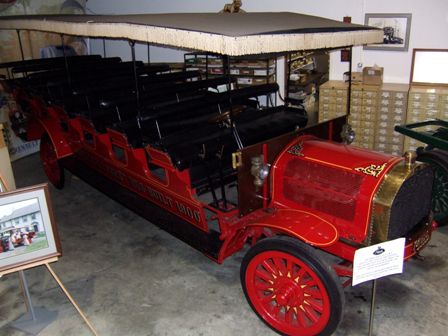 |
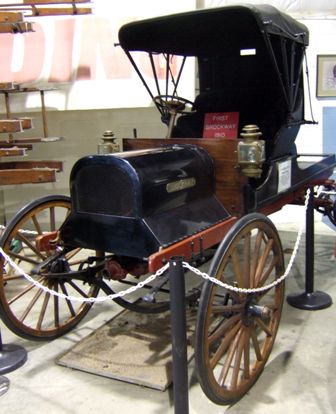 |
Brockway was a separate company until they merged in 1956, so the museum
also contains examples of its vehicles. This 1910 motor wagon has a Chase 3
cylinder 2 cycle air-cooled gasoline engine with fewer moving parts than any
other engine in production at that time. It has a 2 speed 'planetary'
transmission and was built in Homer, New York. |
| This is a 1923 Brockway 5½
- 6 ton truck with a Continental engine and a drayman's body. It was based
at the Garden State Truck Plaza at Bloomsbury, New Jersey. | 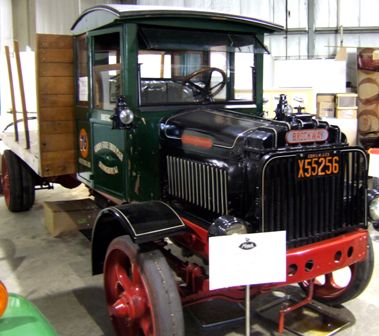 |
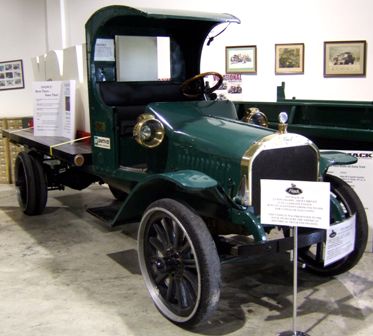 | A 1919 Mack 'AB' model with a 2.5 ton chassis and
shaft driven from a 4 cylinder gasoline engine. 51,613 of this model were
built between 1914 and 1936. |
| A
1933 Mack late model 'AB' truck with a double reduction rear axle and four
wheel brakes (quite an innovation for the times!) | 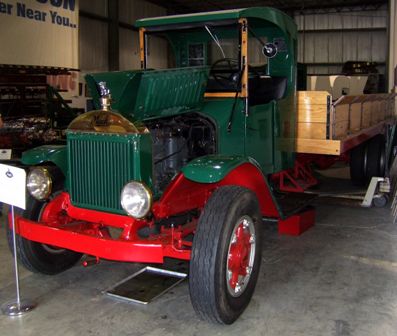 |
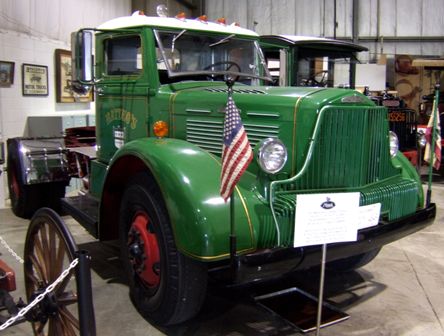 | A
1947 Brockway model 152W-14 with a 42BX Continental engine. It has a Fuller
5A93 transmission and a Timken Q100DPH rear axle. For some odd reason this
was donated by a Los Angeles restaurant owner. |
| Fire engines were always well looked after and tend to
have survived better. This one dates from 1918 and is built on a 5½ ton
Mack AC chain-driven wood hoist dump chassis with a Mack 77hp gasoline
engine. It weighs 9359lbs and has a 156in wheelbase. It was originally
delivered to the Baltimore and Maryland Fire Dept on 17 October 1918. | 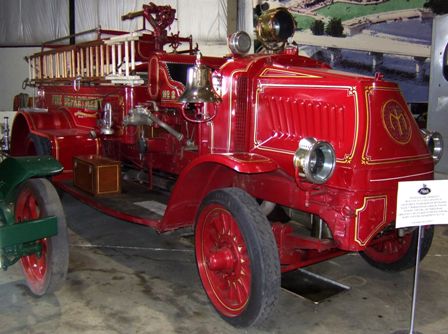 |
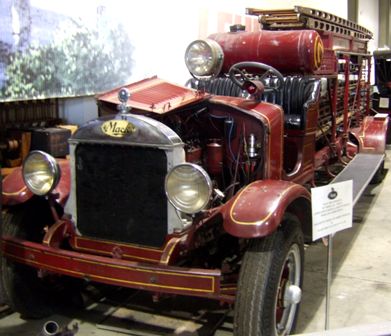 |
This Mack fire apparatus is a 1927 model 'AB' combination chemical and city
service hook and ladder truck from Peckville in Pennsylvania. |
| A little more up to date is this Mack F785T truck with
a Maxidyne diesel engine and a 5-speed transmission.. | 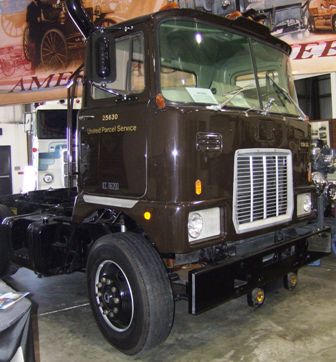 |
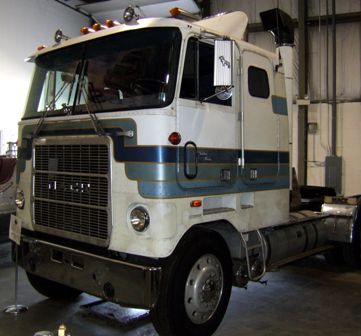 |
Mack experimented with turbines (as many manufacturers did, but all were
without success). This is one of three prototypes built in 1979 on a Mack
'WS' Cruise-Liner with an International gas turbine engine. |
| This is a Mack ENDT675 Maxidyne engine. It was the
first series of constant horsepower high torque rise diesel engines. It
produces 235hp at 2300rpm. It was the main Mack six cylinder engine from
1967 to 1980. | 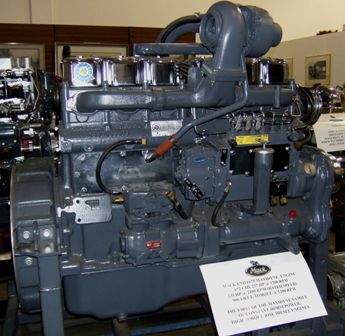 |
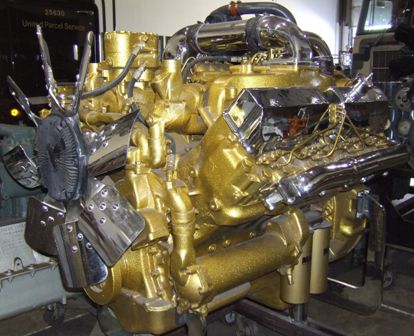 |
The eight cylinder version of the engine above, this one was produced from
1971 to 1976 and produced up to 400hp. Mack still manufacture their own
engines and gearboxes although they now use Allison automatic transmissions
if the customer orders an automatic. All trucks are made to order. |
| The factory has a number of exploded display gearboxes
which will have been used for training purposes when they were current
production. Parts for most models can still be supplied. This is a Mack
12-speed TRTXL1070 air operated compound transmission with twin shift
levers. | 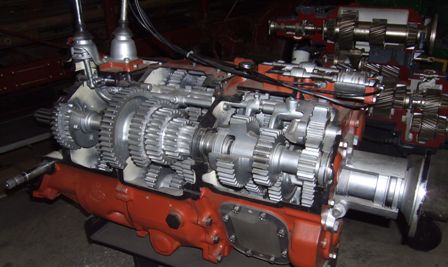 |
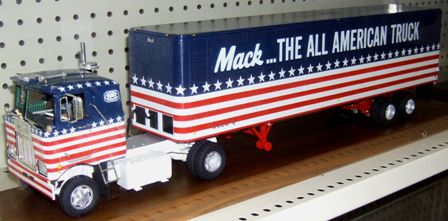 |
The museum is also the company's archive and has hundreds of models and
thousands of photographs. This is just one of many. Mack is the iconic
American truck. |
| However the British tommy would have found Mack trucks
familiar and were in fact the ones responsible for the company mascot.
During WWI the model AC was supplied to the front and its shape
reminded them of a bulldog. It was also tough and tenacious when operating
in the difficult war conditions. This is a model of a successor, the model
NO supplied during WWII to tow artillery guns. | 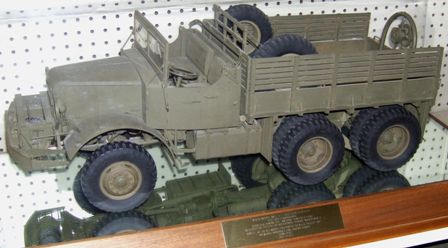 |
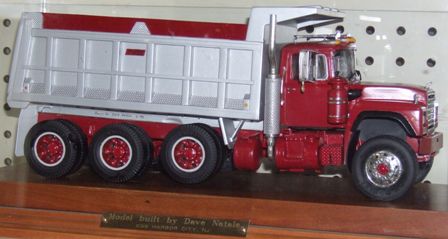 |
Mack is really best known for its heavy dump trucks. This is a beautiful
model and captures the solid feel of the trucks. |
| But the chassis is very versatile. This is a cement
delivery vehicle. Today most of these have the barrel facing forward.. | 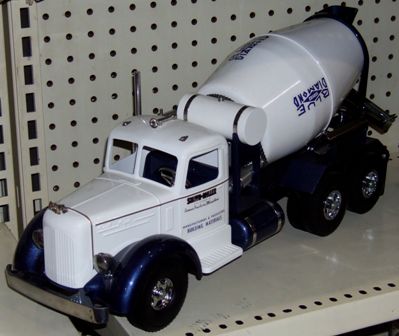 |
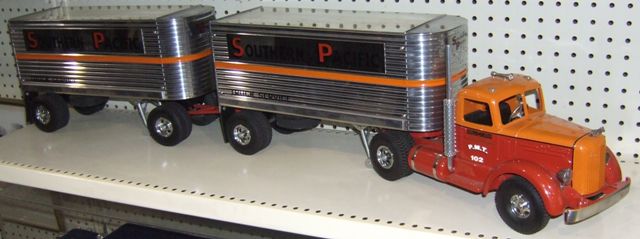 |
Unknown in the UK, tractors with multiple trailers are common in the US,
although two and three trailers are not legal in all states. |
| The scale is getting smaller but these are more widely
seen. |  |
 |
Mack was one of the first manufacturers to deliver trucks like this. This
model was built to celebrate the occasion. |
| The models don't have to be die cast. There are other
media and plenty of craftsmen to use them. This is one of several wooden
models. | 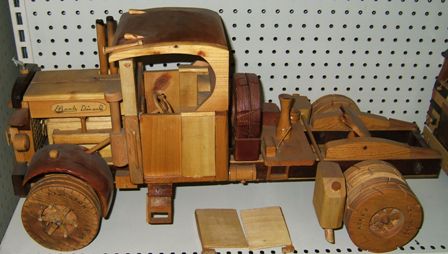 |
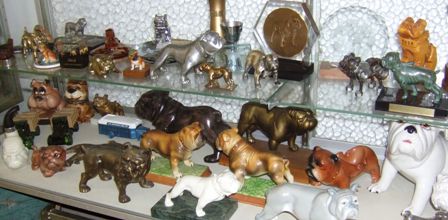 |
The company adopted the bulldog as its mascot and every vehicle bears at
least one. This is part of the sizable collection of bulldogs of all sizes
and various media, including a tapestry, in the museum. The mascot on the
hood has changed over the years (it now has rounded ears and a tail that is
moulded against the body) as a result of litigation by people who have
damaged themselves when using it as a handle. How American! |
|